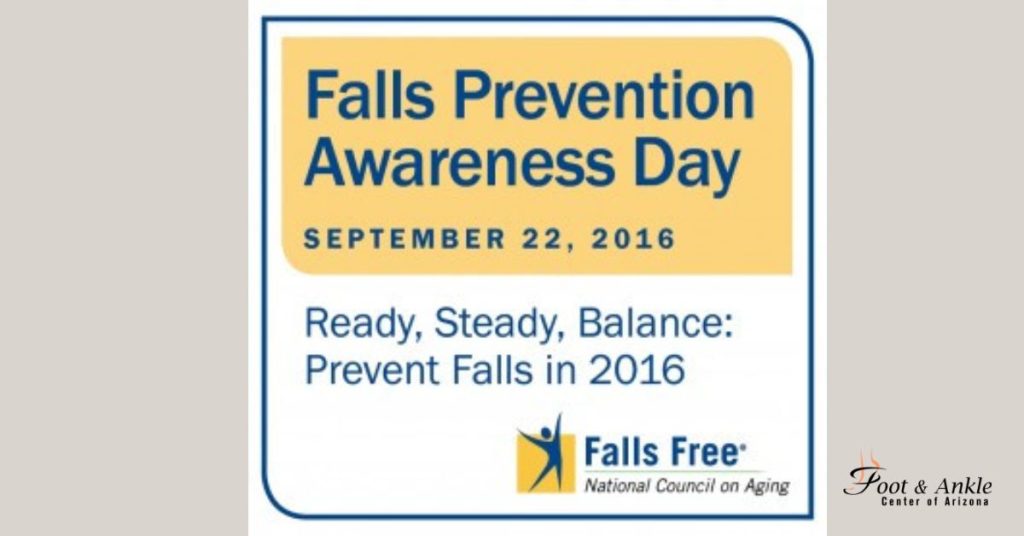National Falls Prevention Day September 22, 2016
September 22nd – The First Day of Fall
The 9th annual Falls Prevention Awareness Day (FPAD) will be observed on Sept. 22, 2016—the first day of fall. The event raises awareness about how to prevent fall-related injuries among older adults. The theme of this year’s event is Ready, Steady, Balance: Prevent Falls in 2016.
The Challenge
According to the U.S. Centers for Disease Control and Prevention:
One-third of Americans aged 65+ falls each year.
Every 11 seconds, an older adult is treated in the emergency room for a fall; every 19 minutes, an older adult dies from a fall.
Falls are the leading cause of fatal injury and the most common cause of nonfatal trauma-related hospital admissions among older adults.
Falls result in more than 2.8 million injuries treated in emergency departments annually, including over 800,000 hospitalizations and more than 27,000 deaths.
In 2013, the total cost of fall injuries was $34 billion.
The financial toll for older adult falls is expected to increase as the population ages and may reach $67.7 billion by 2020.
Quality of Life Impact: Falls, with or without injury, also carry a heavy quality of life impact. A growing number of older adults fear falling and, as a result, limit their activities and social engagements. This can result in further physical decline, depression, social isolation, and feelings of helplessness.
Foot Care May Prevent Falls – From Harvard Health Publications
Australian researchers reported findings from the first-ever randomized clinical trial of foot care as a way to prevent falls. The foot care consisted of several exercises targeting the feet, inexpensive orthotics, and expert advice about shoes and footwear. The results, published in the medical journal BMJ, showed that study volunteers who received the foot care experienced 36% fewer falls than those in the control group.
Here are a few practical suggestions for keeping your feet healthy, from Menz and other sources:
Make sure your shoes fit properly. Research has found that a surprising number of people (35% in one study) are wrong about their correct shoe size. Older people should be especially careful about shoe width. Even without a full-fledged bunion (when the joint at the base of the big toe angles out), the front of the foot may tend to widen with age.
Wear your shoes indoors. Harvard researchers have found that people who wore shoes indoors were less likely to suffer a serious injury from a fall than those who wore slippers or socks or went barefoot.
Lose weight. Being heavy puts more force on your feet, so add another item to the ever-growing list of reasons for staying trim — and dropping a few pounds if you haven’t.
Give less expensive, prefabricated orthotics a try before the custom-made ones. Orthotics can help with foot pain. But custom-made orthotics cost several hundred dollars, whereas a good-quality, prefabricated pair costs about $50. They’ve produced similar results when compared in clinical trials and, notes Menz, the orthotics used in his fall prevention study were prefabricated. So, Menz says, research results and cost consideration argue for trying prefabricated orthotics before spending money on custom foot orthotics, unless you have a major foot deformity that clearly needs custom treatment.
https://www.ncoa.org/healthy-aging/falls-prevention/falls-prevention-awareness-day/
https://www.health.harvard.edu/press_releases/taking-care-of-your-feet-may-prevent-falls-injuries





